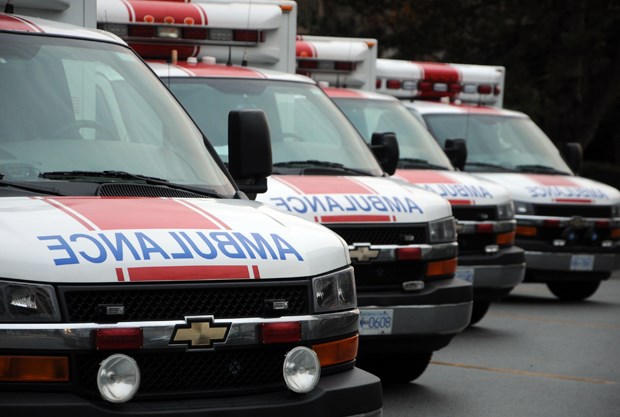North Shore leaders are sounding the alarm after staffing problems in B.C. Emergency Health Services left North Vancouver badly lacking paramedic coverage last weekend (May 29-30).
District of North Vancouver Mayor Mike Little said he and fire chief Brian Hutchinson were warned that, due to a lack of available paramedics and dispatchers, firefighters would have to fill in on primary care calls for sick and injured North Shore residents.
“Obviously, we're very concerned about the level of resources on the North Shore,” Little said. “It’s evident that there is an underfunding on both the dispatch and paramedic resources.”
Many of the primary care calls are the kind firefighters would respond to regardless, Hutchinson said, but firefighters cannot transfer patients to the hospital.
“With less ambulances on the road, it just means a lot of times that we end up being with the patient for an extended period of time, which would fall outside the normal transfer of care,” he said.
If a primary care ambulance were needed, it would have to come from off the North Shore, thereby increasing wait times, and depleting resources elsewhere.
Beyond forcing a patient who may be in distress to wait longer for medical care, that has knock-on effects, Hutchinson said, as other fire departments have to step in to help cover off crews who cannot respond to fires, motor vehicle collisions, or rescues while they’re committed to staying with a patient until an ambulance arrives.
Hutchinson said he’s heard from other fire chiefs who had their crews waiting one or two hours for paramedics to be available, especially if the ambulance is triaged to a higher-priority call.
Troy Clifford, president of the Ambulance Paramedics of BC - CUPE Local 873, said the problem has been bad for much of 2021 and is getting worse.
“We do see this regularly, lately. I know I've been sounding the alarm on staffing and workload we're seeing over across the Lower Mainland – up to 30 ambulances, at times, out of service and in times or pockets like the North Shore, they just don't have the resources to staff.”
North Van and West Van are supposed to have four daytime emergency paramedics and three staffed at night. Clifford said, in his opinion, the North Shore’s paramedic coverage is already thin, even with full staffing.
“It’s a large population base that should not be having those shortages that we’re experiencing,” he said. “It could impact patient outcomes for sure.”
Clifford attributes the shortfall to burnout among paramedics who have been taxed responding to the opioid crisis and working through a pandemic but also to mismanagement by BCEHS.
The obvious solution is recruiting more paramedics, he added.
There’s no good time for a shortage of paramedics but it’s especially worrying that it comes as local fire departments and North Shore Rescue are getting into an extremely busy trail rescue season, Little said.
“You may end up in a situation where we don't have enough resources to manage the calls on the North Shore,” he said. “My goodness, I think [North Shore Rescue] had four calls on Sunday alone and some of them were rather serious.”
Little said that in the short-term it makes sense for firefighters to step in and provide primary care when required, but he added that is no long-term solution.
Hutchinson said the shortfall should be treated as an opportunity to look at emergency response in the bigger picture and find “all efficiencies.”
“Sometimes it takes these small bumps in the road to get everybody to refocus on how we are delivering that service,” he said.
Little said he has advocated in the past for paramedic services in urban areas to be “properly downloaded” to municipalities, allowing local governments to better integrate their responses with fire departments and set service levels.
BCEHS did not provide specifics as to how few paramedics were on staff over the weekend, nor did they provide anyone for an interview, but the agency did send a statement.
“There’s no doubt the COVID-19 pandemic and the overdose crisis have been physically and mentally exhausting for our front-line employees and has, at times, put pressure on our staffing,” it read. “We appreciate the assistance of our firefighter first responder partners, who can provide basic first aid until paramedics arrive to take over.”
BCEHS is monitoring staffing levels and “making adjustments as needed,” it continued.
Across the province, the agency typically responds to more than 1,400 calls a day but recently, that number has spiked to as high as 1,700.
Patients with life-threatening symptoms including cardiac arrest and breathing difficulties receive the highest priority response and the closest available ambulance is usually the one sent.
“We can assure B.C. residents paramedics continue to get to critical patients and prioritize our responses based on the medical priority dispatch system used around the world,” the statement read.



